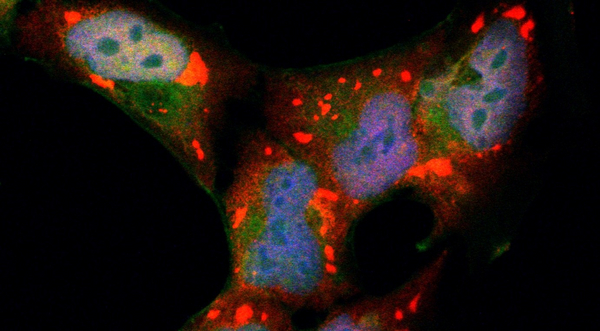Hallmark of ageing: Impaired proteostasis & autophagy
Impaired proteostasis and autophagy are two closely linked primary hallmarks of ageing. Autophagy is the process by which cells break down and recycle their components.
Cellular waste disposal
In order for our cells to function, they need many different proteins and larger molecular machines at the right time, in the right quantity and the right place. Faulty proteins are repaired or removed, and proteins that are no longer needed are broken down. This very effective waste removal process is called proteostasis. Larger accumulations of proteins and larger molecular machines, as well as invading pathogens, are recycled via a special pathway known as autophagy.
Protein clumping contributes to ageing
However, the older we get the worse this waste disposal works. Faulty proteins clump together and damage cells. These clumps (aggregates) cause nerve cells in the brain to die. Impaired proteostasis and autophagy occur in neurodegenerative diseases such as Alzheimer's disease, Parkinson's disease and amyotrophic lateral sclerosis (ALS), which the famous physicist Stephen Hawking suffered from. Protein clumps also cause problems in other cell types: in the eye, clumped proteins often cloud the lens cells and cause cataracts that impair vision with age.
Autophagy is also less effective as we get older. In addition to protein clumps, molecular machines that no longer function accumulate. Pathogens can no longer be effectively combated and inflammatory reactions are triggered as a result.
Boosting autophagy and healthy ageing
The direct link between autophagy and longevity has been shown in model organisms. Various drugs and dietary supplements can stimulate autophagy. Researchers hope that this will slow down ageing and improve the typical symptoms of ageing. Initial studies on this in humans are being planned.
A joint research network of the universities in Mainz and Frankfurt is currently investigating how autophagy is controlled in detail.

